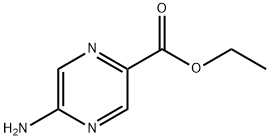Have you ever wondered how we can deal with nitrate - containing wastewater, which is not only harmful to the environment but also a waste of resources? Here comes exciting news: scientists have developed an electrochemical method aiming at the dual conversion of this kind of wastewater. But how does it work exactly? Can it really convert harmful nitrates into useful ammonia while purifying the water at the same time? What are the key factors affecting the efficiency of this method? And most importantly, is it feasible for large - scale industrial applications?
Electrochemical conversion of nitrate - containing wastewater: Can ammonia and purified water be produced simultaneously?
Related Encyclopedia
Related Products More >
-
- 1336-21-6
- CNY 500.0000
- 1ton
-
- 7631-99-4
- CNY 5.0000
- 25g
-
- 7631-99-4
- USD 11.0000
- 25kg
-
- 7761-88-8
- equest For Quotation
- 10g
-
- 7761-88-8
- equest For Quotation
- 100g
-
- 7761-88-8
- equest For Quotation
- 500g
-
- 7761-88-8
- equest For Quotation
- 1kg
-
- 7782-61-8
- equest For Quotation
- 25kg




 沪ICP备2021018848号-5
沪ICP备2021018848号-5

Let's talk about ammonia first. It's one of the most - produced compounds in the world. We use it in fertilizers and other stuff, and the global demand is a whopping 180 million tons every year! But here's the problem: the way we usually make ammonia involves super high temperatures and pressures, and we use a ton of hydrogen as a raw material. Because of that, ammonia production contributes to about 1.4% of the world's CO2 emissions and gobbles up 2% of the global energy every year. And on top of that, nitrates from farming and industry often end up running off and polluting our water sources. It's a real mess!
But now, this team from Rice University, led by Hao Tian Wang, has designed this three - chamber electrochemical device. It's like magic! You just pour the wastewater into the device, and as the water flows through this porous solid - state electrolyte layer, boom! The nitrate solution turns into water and ammonia gas. The best part is, we don't need any extra supporting electrolytes, and it works great even at the nitrate concentrations you'd usually find in industrial wastewater, around 2000 parts per million. And there's no need for extra purification steps after that.
The researchers say this device could totally revolutionize ammonia production by making it way more eco - friendly, and it also helps solve the wastewater problem at the same time. But right now, all these experiments have only been done in the lab. So in the future, we've still got to figure out if these devices will actually work well in the real world, you know, in actual factories and wastewater treatment plants. I'm really excited to see where this goes. Maybe this could be the game - changer we've been waiting for to deal with both pollution and energy - intensive production!